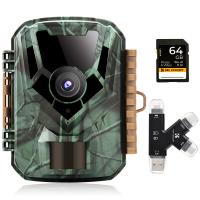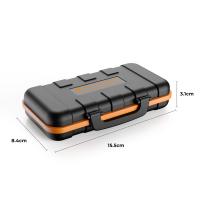How To Stop Write Protection On Sd Card?
In the digital age, SD cards have become an essential tool for storing and transferring data. However, one common issue that users often encounter is write protection. Write protection prevents any modifications or deletions of the data stored on the SD card, which can be frustrating when you need to update or remove files. This article will guide you through various methods to disable write protection on an SD card, ensuring you can manage your data effectively.
Understanding Write Protection
Write protection is a feature designed to prevent accidental deletion or modification of data on storage devices like SD cards. While this can be useful in some scenarios, it can also be a hindrance when you need to make changes to the stored data. Write protection can be enabled either through a physical switch on the SD card or through software settings.
Physical Write Protection Switch
Many SD cards come with a physical switch on the side that can enable or disable write protection. This switch is usually labeled as "Lock" or "Unlock." If your SD card has this switch, follow these steps:
1. Locate the Switch: Find the small switch on the side of the SD card.
2. Toggle the Switch: Move the switch to the "Unlock" position. This should disable the write protection.
3. Test the Card: Insert the SD card into your device and try to modify or delete a file to ensure that the write protection has been disabled.
Software Write Protection
If the physical switch is not the issue, the write protection might be enabled through software settings. Here are several methods to disable software write protection:
Method 1: Using Diskpart on Windows
Diskpart is a command-line utility in Windows that can manage disk partitions and storage devices. Follow these steps to disable write protection using Diskpart:
1. Open Command Prompt: Press `Win + R`, type `cmd`, and press Enter.
2. Launch Diskpart: In the Command Prompt window, type `diskpart` and press Enter.
3. List Disks: Type `list disk` and press Enter. This will display all the disks connected to your computer.
4. Select Disk: Identify your SD card from the list and type `select disk X`, replacing `X` with the number corresponding to your SD card.
5. Clear Write Protection: Type `attributes disk clear readonly` and press Enter.
6. Exit Diskpart: Type `exit` and press Enter to close Diskpart.
Method 2: Using Registry Editor on Windows
The Windows Registry Editor can also be used to disable write protection. Follow these steps:
1. Open Registry Editor: Press `Win + R`, type `regedit`, and press Enter.
2. Navigate to StorageDevicePolicies: Go to `HKEY_LOCAL_MACHINE\SYSTEM\CurrentControlSet\Control\StorageDevicePolicies`.
3. Modify WriteProtect Value: Double-click on the `WriteProtect` entry and set its value to `0`.
4. Restart Your Computer: Restart your computer to apply the changes.
Method 3: Using Disk Utility on macOS
For macOS users, Disk Utility can be used to manage write protection settings. Follow these steps:
1. Open Disk Utility: Go to `Applications > Utilities > Disk Utility`.
2. Select the SD Card: In the Disk Utility window, select your SD card from the list of drives.
3. Erase the SD Card: Click on the `Erase` tab and choose a format. Note that this will delete all data on the SD card, so make sure to back up any important files.
4. Reformat the SD Card: Click `Erase` to reformat the SD card, which should remove any write protection.
Additional Troubleshooting Tips
If the above methods do not work, here are some additional troubleshooting tips:
1. Check for Physical Damage: Inspect the SD card for any physical damage that might be causing the write protection issue.
2. Try a Different Device: Insert the SD card into a different device to see if the write protection issue persists.
3. Update Drivers: Ensure that your device's drivers are up to date, as outdated drivers can sometimes cause write protection issues.
4. Use Third-Party Software: There are various third-party software tools available that can help manage and disable write protection on SD cards.
Preventing Write Protection Issues
To avoid encountering write protection issues in the future, consider the following preventive measures:
1. Handle with Care: Always handle your SD card with care to avoid physical damage.
2. Regular Backups: Regularly back up your data to prevent data loss in case of write protection or other issues.
3. Keep Software Updated: Ensure that your device's operating system and drivers are always up to date.
4. Use Quality SD Cards: Invest in high-quality SD cards from reputable manufacturers to minimize the risk of encountering write protection issues.
Write protection on an SD card can be a significant inconvenience, but with the right knowledge and tools, it can be easily disabled. Whether the issue is due to a physical switch or software settings, the methods outlined in this article should help you regain control over your data. By understanding the causes of write protection and following the provided solutions, you can ensure that your SD card remains a reliable and flexible storage solution.













There are no comments for this blog.